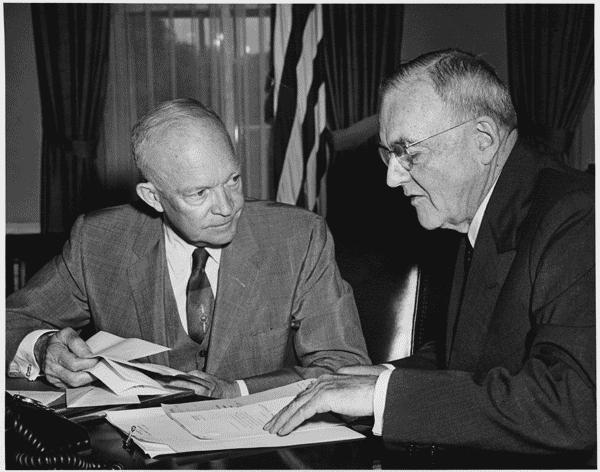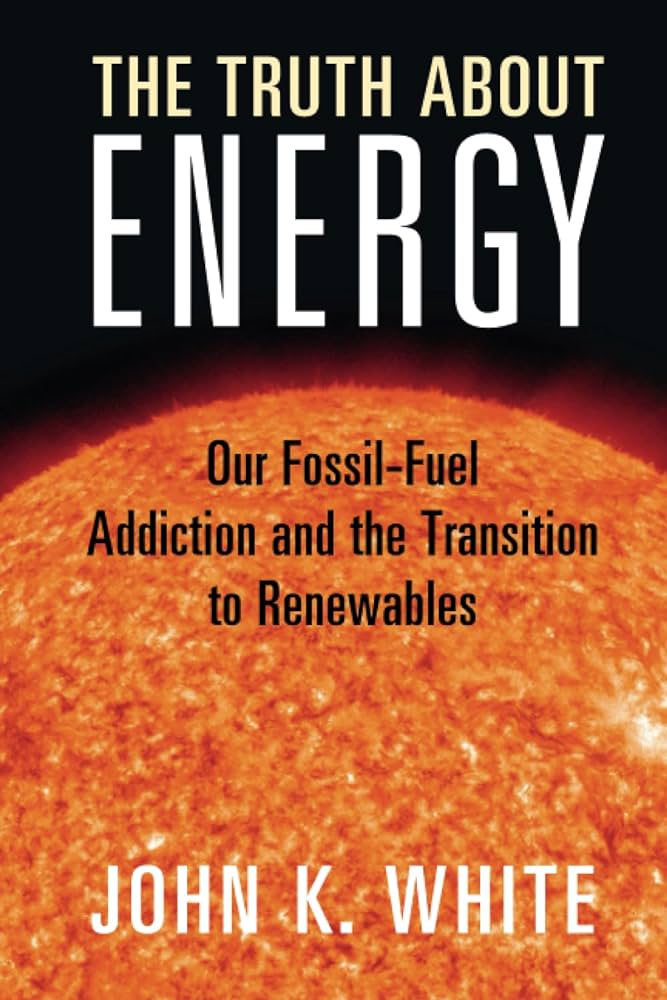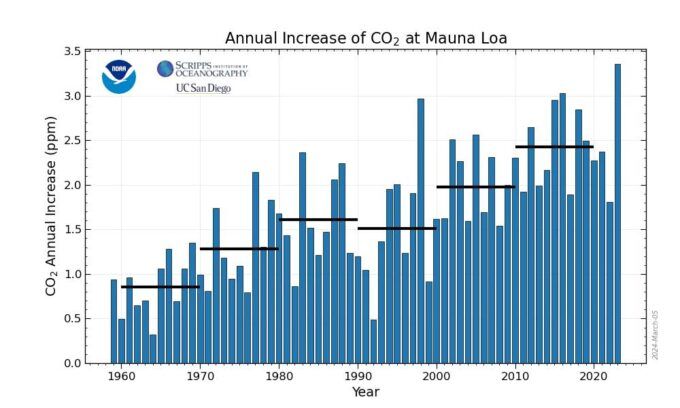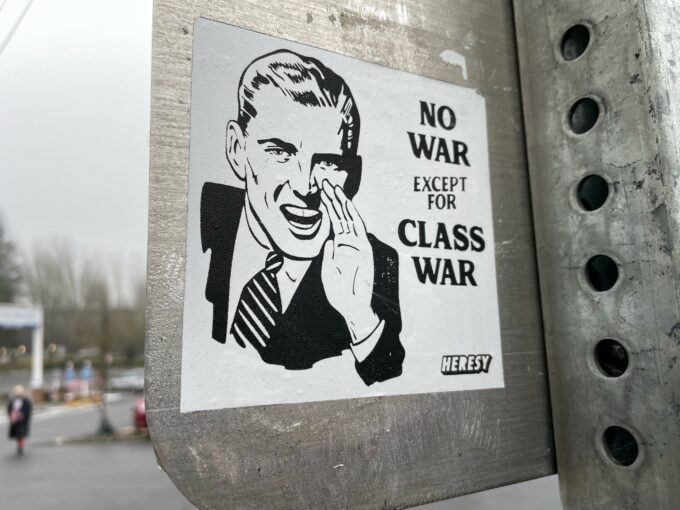

Photo by Pau Casals
I guess that having 91 criminal indictments to defend, a number of civil lawsuits pending, allegations and judgments of sexual abuse circulating, civil fines close to $500 million to pay, and a presidential campaign to manage isn’t enough to get Donald Trump out of his gilded, canopied bed each morning, so to this to-do list he has added orchestrating one of the largest Wall Street stock swindles perpetrated in recent years, as if his real goal is to star in a new reality show of financial crimes called Other People’s Money.
The tale begins in the aftermath of January 6, when the likes of Twitter (now X) and Facebook banned the former president from their sites, leading him to conclude that “to be heard” he needed to start his own social media platform—hence Truth Social—from which he could peddle his babbling, compete with the “liberal media”, and cash in another fortune when the wildly successful start-up went public.
Because $750-a-year taxpayer Trump never seems to have any liquid assets to invest or pay to his victims, he raised the seed capital for Truth Social from a list of his political stalwarts, a former U.S. ambassador to Portugal, and—according to Reuters—“the head of a mail-order fruitcake company.”
It was enough for the company to rent offices in Sarasota, Florida, and hire investment bankers to dream of an initial public offering that would be so confusing (with convertible promissory notes, warrants, common stock, and preferred shares) that not even an MIT professor of business could unravel the prospectus. (One of the best ways to cover up fraudulent accounting is with detail and confusion.)
The pot of gold at the end of the Sarasota rainbow would be the Colossus of Trump bestride his very own social network, taking down the likes of Facebook and inheriting its $1.3 trillion market capitalization.
+++
To fund the startup venture Trump issued what are call convertible promissory notes to his angel investors.
These convertible notes were not unlike some of Willy Wonka’s golden tickets, in that they allowed Trump to raise funding and to remain in control of the new company.
For the lenders, the convertible bonds paid a fixed rate of interest (between 5 and 10%), were more senior in the debtor class than the equity holders, and, best of all, down the road could be converted (at sweetheart valuations, such as an exercise price of $4) into Truth Social stock once their partner-in-crime Donald Trump had talked up the company either to an initial public offering (IPO) or some other cash-out windfall event. In stock market parlance, this was to be a “pump and dump”, if not the public offering of a presidential candidate.
Like many start-ups, this one sounded as though it “couldn’t miss,” but almost immediately it did.
+++
Part of the problem at Truth Social was that, with himself as chairman of the board (at least in the early days), Trump assembled a team of directors and executives as if the company’s business was stealing elections, not building out a tech start-up.
As chief executive officer, Trump chose Devin Nunes, a former Republican member of Congress (2003-2022), whose only qualification to run a public company was unabashed sycophancy toward his board chairman, Donald Trump.
As the ranking member of the House Intelligence Committee (2019-2022), Nunes carried Trump water during the first impeachment hearings, leaking confidential House committee material to the president and his various henchmen, including personal attorney (now bankrupt) Rudy Giuliani.
Nunes also filed numerous defamation lawsuits against various journalists and liberal media outlets, including a $250 million lawsuit against Twitter, which was then hosting a gag account called “Devin Nunes’s Cow.”
None of Nunes’s stunts went anywhere legally, but they endeared him to the vainglorious Trump, who rewarded his slavish acolyte with a Trump Organization job that paid more than $1 million annually (when you add in all the incentive compensation).
+++
In turn, Nunes filled out the management ranks of Truth Social with his own lackeys, including Kash Patel, who worked for then-member of Congress Devin Nunes and later served in the Trump administration.
For the board of directors, Trump chose from his political claque, including Robert Lighthizer (a former U.S. Trade Representative and Trump loyalist) and Linda McMahon (once a professional wrestling impresario along with her WWE husband Vince).
The point is that almost no one in the upper echelon of the new company knew much of anything about social media, other than how to post insults against the likes of Hillary Clinton or Joe Biden.
Almost immediately Truth Social began to burn through its seed capital, no doubt in various Trump-related harebrained promotions and schemes, none of which made money.
+++
Needing to bail out the struggling startup, Trump and his circle of yes men turned to two sources of new funding, both of questionable legality.
To bolster its depleted cash account, Truth Media borrowed $8 million from a Russian-American businessman named Anton Postolnikov, whose uncle has been in the administration of the Russian president, Vladimir Putin.
According to reporting done by The Guardian, Postolnikov lent Trump the money through his ES Family Trust, which had its bank accounts at something called Paxum Bank, owned by Postolnikov and located on the Caribbean island of Dominica (which is popular among Russian oligarchs for evading sanctions).
Presumably, if Donald Trump were worth the many billions that he claims to have, he would not have needed to save his failing social media company with $8 million in loans from a Caribbean off-shore bank that largely services the porn industry, specifically payments made for what the redtube trade calls “camming,” a live, online peep show.
+++
While Truth Social was camming its $8 million in Russian flight capital, other Trump loyalists were coming to his financial rescue by raising $300 million in a special purpose acquisition corporation (or SPAC) called Digital World Acquisition Corporation.
By law, SPACs are publicly-listed vehicles (often on Nasdaq) that first raise a pile of money and then go in search of companies or ventures to buy. The governance regulations on SPACs are lighter than an IPO, and the new company immediately has a public listing.
While the law requires SPACs to raise money without an acquisition target in mind, it is common knowledge on Wall Street that SPACs often do exactly that.
In this case, no sooner had Digital World pulled down $300 million, much of it raised from influence peddlers in the Trump orbit, than it announced in October 2021—surprise, surprise—that it would be merging with Trump’s very own Truth Social.
That later coziness cost Digital World an $18 million Securities and Exchange Commission (the SEC, which oversees share markets) fine in 2023, as per the 10-K, which reads:
On July 20, 2023, the SEC approved the Settlement in Principle, announcing settled charges against Digital World and entered a cease-and-desist order (the “Order”) finding that Digital World violated certain antifraud provisions of the Securities Act and the Exchange Act, in connection with Digital World’s IPO filings on Form S-1 and the Form S-4 concerning certain statements, agreements and omissions relating to the timing and discussions Digital World had with TMTG [Trump Media and Technology Group] regarding the proposed business combination…
Leaving that collusion aside, the SPAC investors still believed that they were getting in on the ground floor of a Trump-owned social media company, while Trump himself would get access to Digital World’s $300 million in cash and its listing on Nasdaq. It was a corporate marriage made in heaven, or by those boxes in the pool room at Mar-a-Lago.
+++
After several years of due diligence, the SEC finally approved the merger of Truth Social and Digital World, and the newly blessed public company chose DJT as its Nasdaq ticker symbol.
Strangely, what only slightly held up the merger at the SEC was an insider-trading scandal that came to light involving three individuals—brothers Michael and Gerald Shvartsman, and a third man, Bruce Garelick—who made about $22 million trading Digital World shares in 2021 based on the non-publicly disclosed information that the SPAC had the intention of merging with Trump’s Truth Social. (Recently the Shvastsmans pled guilty to one count of securities fraud.)
It did not seem to concern the somnolent SEC that Michael and Gerald Shvartsman are or were close associates of Trump savior and camming porn banker Anton Postolnikov, nor that after Postolnikov’s ES Family Trust had bailed out Trump’s Truth Social in 2021, Bruce Garelick joined the board of directors of Digital World, from which he leaked the confidential merger information to the brothers Shvartsman.
Clearly to regulators, it was just a coincidence that the charged inside traders both knew Postolnikov and were speculating in the shares of Digital World before it announced its plan to merge with Trump’s Truth Social.
+++
In the end, the merger between Digital World and Truth Social went ahead, and on March 26, 2024, shares in the new company, Trump Media and Technology Group (TMTG), began trading on Nasdaqat between $40-60 a share (the market having bid up the price of Digital World’s shares in anticipation of the Trump deal consummating). Suddenly Trump could boast that he had another $3 billion in his deep pockets.
In the days that followed shares traded as high as $79, giving the new company at times a market capitalization of about $10 billion. The valuation of Trump’s 58% stake was suddenly close to $6 billion.
The same Donald Trump who just days before had been struggling to post a $450 million surety bond to appeal the civil judgments against the Trump Organization now had new-found billions that were further testament to his business genius and Midas touch.
Using other people’s money and only putting up his own social media account, Trump had suddenly parlayed his tweets into a $6 billion windfall, almost as if he had won the Powerball lottery six times in a row.
+++
Part of the reason why DJT shares defied the laws of financial gravity was that prior to the Digital World consolidation, very little was known about Truth Social’s financial condition.
As a privately-held company, it had been under no obligation to post its financial statements. Nor did it have to publish the number of its subscribers or associated ad revenue.
After the merger (actually it was done as a “reverse merger,” in which for accounting purposes Truth Social acquired Digital World and its $300 million cash balance), TMTG was required to disclose to the SEC its statements of financial condition.
What they show is that Donald Trump’s new public company is a wilderness of mirrors, not unlike his conglomerate of Atlantic City casinos, Trump Hotels and Casino Resorts, that in the 1990s was listed with only one goal—to sucker investors into believing the Trump dream and to give him a public vehicle in which to dump his unpaid loans and debts and from which to pay himself handsomely.
+++
For anyone willing to spend time with the small print of the 10-K and 8-K reports, the filed SEC statements of the new company read like a case study of a pyramid scheme set up only to enrich Donald Trump and provide his “investors” unfettered access (via a Nasdaq listing) to his political soul. Who needs bag men when you have the Depository Trust Company to settle your backhanders?
Let’s start with the December 31, 2023 pro forma income statement of the combined companies, Truth Social and Digital World. The filed statements show that Trump’s Truth Social came to the merger party with annual sales in 2023 of $4.1 million and $19 million in losses from continuing operations (hardly the catnip that will get normal investors to bid up the value of a company to $10 billion).
On top of these charges, the company took a $39.4 million charge in “interest expense”, which brought the net loss for 2023 to $58.1 million, as has been reported in the press. On a pro forma basis, the combined companies’ losses were a lot worse.
Together the two merged companies lost $100 million; many of these losses were incurred so that insiders could convert their promissory notes into equity at sweetheart valuations.
(Convertible notes with a low strike price are best understood as vehicles for legalized insider trading, in that those who often hold them have full access to the company’s financials and plans for future public offerings,)
The statements explain why Trump can boast that his new company has “no debt and $200 million in cash,” when in fact it should have $300 million, had not Trump contributed $100 million in losses to the combined enterprise.
What also drove up the losses, according to a footnote in the SEC financial statements, were “transaction costs, which include legal, accounting, advisory and consulting fees and $18 million for the SEC settlement.”
It says something about Trump’s desperation for capital that he was willing to pay 33 cents on the dollar to raise new money for his failing Truth Social. (Just as it says a lot that to raise his surety bond for the appeal in New York State court, Trump had to turn to a subprime loan shark and repo man.)
+++
One of the more amusing lines in the SEC filings is that “accounting” contributed to the $124 million in the “general and administrative expenses” rung up by Trump Media.
The auditor for Truth Social and now Trump Media is a Lakewood, Colorado-based one-man accountancy, BF Borgers CPA PC, run by one Ben Borgers, who, when not doing the accounts for Trump Media, “enjoys Jeeping in his CJ-7 that he built from scratch, horseback riding, backpacking, fishing, camping, hunting, sailing, hiking and spending time with his wife and three children.”
Normally, a publicly-listed company with a market cap between $5-10 billion (that’s the size of the New York Times) would work with a major independent audit firm in the same city as its headquarters, but here a Sarasota-based social media company with hopelessly confusing financial schemes went with a sole practitioner in the Denver suburbs. (Why am I reminded that the accountants for Bernie Madoff’s billion-dollar kingdom of shadows were located in a suburban strip mall?)
I am sure many people would like to believe that accounting is a science and that audited numbers cannot lie, but a friend of mine used to say the reason he loved financial statements was because they reminded him of poetry, particularly sonnets (“How do I love thee? Let me count the ways…”). And few companies go to the lengths of Trump Media in bashfully masking their intentions—in these lines of iambic pentameter, that of raping a public company.
+++
Only when we turn to the balance sheet do we see the extent to which—before the merger with Digital World—Truth Social was a beached whale.
On 12/31/23, Truth Social had cash on hand of $2.9 million and little else in terms of assets (the $29 thousand in used laptop computers hardly count).
As for its year-end liabilities, the company had $65 million in current liabilities (most of that was convertible promissory notes coming due), and non-current liabilities of another $4.2 million, which meant the “accumulated deficit” in its shareholder equity account was $66 million.
In other words, Truth Social was insolvent, and was saved only when the fairy godmothers at Digital World showed up to bestow on Trump $300 million.
And then, rather than pay nothing for a struggling bankrupt media company run by political operatives, Digital World deceived its own shareholders by giving 58% of the merged company to Donald Trump, even though all he was bringing to the combined company were nasty tweets and $66 million in “accumulated deficit”.
+++
Clearly, the shareholders in Digital World were not buying into a hot technology company (which was worth nothing), but securing options in a future American presidency.
They were also signing on to the illusion that Trump’s stockjobbing abilities to “pump” the shares in TMTG would outweigh whatever losses they were acquiring by merging with a bankrupt company or accepting a terrible conversation ratio.
For the moment, at least on paper, the roughly 30% share in TMTG that the SPAC shareholders got in the merger is worth $1.6 billion, which is five times what they originally invested ($300 million) in Digital World. Sounds good for them, yes?
But as I have been writing this, the shares in DJT have fallen from $49 to $42 and now are hovering just above $40. By the time you read this, I am sure the shares will be well under $40.
Based on normal stock market valuations, DJT should not be trading at $40 but at about $1.59 per share, which is the market value of the $218 million in cash on the year-end pro forma balance sheet.
+++
A deeper dive into Trump Media’s capital and equity accounts confirms that the merger was a financial bailout of Donald Trump, engineered by his political circle, more than an investment in a social media start-up.
For the moment, the total number of issued shares in TMTG are 137,051,068, of which Trump himself owns 58%, a nice haul considering that all he has invested in the venture are his posts. (If you give money to his presidential campaign, you max out at $3,300.)
At today’s closing stock price of $40 a share, Trump’s stake is worth $3.1 billion, although he is locked-up from selling his stake for the next six months, unless a third party (do I hear you suggest the sovereign fund of Saudi Arabia or a Putin piggy bank?) buys up the money-losing company.
On top of Trump’s 58% of the new company (it should be considered a campaign contribution, given the accumulated deficit of Truth Social), he has the possibility of being given another 40 million in “earnout shares”, should the performance DJT stock meet certain criteria (such as trading above $12.50 per share for twenty days during a thirty day period).
Overall, ordinary shareholders of Trump Media could see the stock diluted by another 67,367,242 shares, if certain market and option thresholds are met and exercised. And the person with the most to gain from such a dilution is Donald Trump, who at the end of the day is guaranteed to maintain his 58% stake, even if he does not invest another dollar in the company.
+++
Of course, Trump would dump his position tomorrow, although for the moment internal and external regulations prevent him from selling his shares. I have read in the press that his pliant board of directors could waive the lockup period, but the current language in the SEC filings says Trump cannot sell his shares for at least six months from the merger, unless, for example, a third-party bidder takes over the company in the meantime.
For clarity’s sake, here’s the pertinent clause in the 10-K:
[Private TMTG shareholders]…may not transfer any Locked-Up Shares until the end of the period beginning on March 25, 2024 and ending on the earliest of (i) September 25, 2024, (ii) the date on which the closing price for the Common Stock equals or exceeds $12.00 per share (as adjusted for stock splits, stock dividends, reorganizations, recapitalization and the like) for any 20 trading days within any 30-trading day period commencing at least after August 22, 2024, and (iii) the date on which the Company consummates a liquidation, merger, share exchange or other similar transaction that results in all of the Company’s stockholders having the right to exchange their equity holdings in the Company for cash, securities or other property.
That said, Trump can pledge his position as collateral or otherwise barter the block without actually selling the shares. But with the price soon to be in free fall, I would guess that Don Jr. is on the phone with his brother-in-law, Jared Kushner, pleading with him to get the Saudis or the Russians to buy out the entire company at, say, $35 a share, which is the only way Trump might salvage his position from a death spiral.
+++
Shares in DJT are now trading at $40 a share, which is about 25 times the company’s book value. By comparison, Exxon trades at 2.5 its book value.
For a while meme day traders and Trump loyalist moneymen were propping up the share price, especially to squeeze short sellers who believe the company is grossly overvalued and headed for a collapse. But the squeeze shows signs of coming apart, and after that there’s little to keep DJT from falling, say, from $40 to $4.
Another risk to Trump in this pending fiasco isn’t just that his shares become illiquid and worthless, but that the porn banker, Anton Postolnikov, sings to the Feds and implicates Trump not just in the insider trading scandal but with laundering Russian flight capital through the TMTG balance sheet (using convertible promissory notes and, later, DJT shares to turn the trick).
Nor does it contribute market confidence in DJT that, with all this going on, Trump decided to sue two of his founder shareholders, Andy Litinsky and Wes Moss (they were former contestants on The Apprentice who first came to Trump with the idea of going public with a social media company) to deny them their promised 8.6 million shares in Trump Media.
In so doing, Trump exposes himself to legal discovery, including, I am sure, more than a few defense questions about his relationship with his banker in Dominica.
And his feud with the apprentices is by no means the only dispute among TMTG shareholders, the chronicles of which go on for pages in the 10-K, as Trump only believes in paying himself.
+++
About all Trump has going for him in this tottering house of marked cards is that someone in his orbit has managed to reach the SEC and keep its investigators at bay.
In theory, according to its website, “the SEC’s long-standing three-part mission—to protect investors, maintain fair, orderly, and efficient markets, and facilitate capital formation—remains its touchstone.”
If that’s the case, why does it allow public trading on Nasdaq in a company dominated (at the board level and in its shareholding) by one man (Trump) who by virtue of his political soapbox managed to pump up a venture with $100 million in accumulated losses into a company that, briefly anyway, had market valuation of $10 billion….but which since has shed about $4-5 billion in such valuation.
Nor does the SEC seem particularly concerned that inside traders in Digital World shares might well have gotten their tips from a Russian banker who bailed out Trump’s Truth Social in 2021 with a loan from his Caribbean porn bank.
Nor do I think that even the SEC has the resources to unravel the black box of Trump Media’s equity accounting, layered as it is with convertible notes, common and restricted stock, incentive compensation, placement and public warrants, preferred shares, conversion periods, and earnout shares—all thrown into the witches’ brew of TMTG’s accounts to obfuscate that Donald Trump has set up a drain on a public company.
Instead, allowing the company to “trade” on Nasdaq, the SEC gives the DJT shell gamers and three-card monte dealers a veneer of respectability, which is what all con men desire, beyond what Willy Loman called “riding on a smile and a shoeshine.”
The post Trump’s Wolves on Wall Street: Inside the Truth Social Numbers appeared first on CounterPunch.org.
This post was originally published on CounterPunch.org.

















































![Protestors hold up signs. One mimics a sugar-excess nutrition label “[WARNING] Excessive cultural destruction.” Another reads “Father, what does ‘quit’ mean? I don’t know, my son, we’re Peronists.” On the right, the sign reads “Milei! Tyrant! I shove your laws up my ass” Image Credit: Phoebe Moore, CC BY-NC-SA](https://149356667.v2.pressablecdn.com/wp-content/uploads/2024/03/protest-argentina-1024x682.jpg)




























